“All you need is love. But a little chocolate now and then
doesn’t hurt.”
~ Charles M. Schulz
Is Chocolate Good or Bad For You?
One of life’s essential questions, at least for me. I loooove chocolate, although I didn’t start out that way. In fact, as a child, even the smell of chocolate made me nauseous. My mother took our family to Hershey Park, which would be most kids’ version of heaven. Me? I stayed in the car with the windows closed, lying in the backseat, willing the smell to go away. Then I turned 18, my body flipped a mystery switch, and I started to love the stuff, the richer the better. In the healing diet movement, chocolate’s a mild controversy. Elaine Gottshcall, author of the SCD diet, says it’s a no-no. But Dr. Natasha Campbell-McBride, author of the GAPS diet, says that as long as it’s the real thing, most people tolerate it very well. In the Paleo/Primal movement, dark chocolate is accepted as a healthy indulgence. On the Autoimmune Protocol however, it’s out during the elimination phase. So, I decided to delve into this ingredient a little further and clarify its pros, cons, and where it fits on a healing diet.
Fake Chocolate
First let’s clarify what constitutes real chocolate. Most of the bars you buy in the grocery store contain some pure chocolate, combined with lots of other things that are common food intolerances: sugar, soy, dairy, nuts, additives, etc. This is true for health food store chocolate, also. Here are two examples:
- Hershey’s Special Dark Chocolate Chips Ingredients: sugar, chocolate, cocoa butter, cocoa processed with alkali, milk fat, lactose (milk), soy lecithin, natural flavors, and milk. Analysis: The first ingredient is sugar, which means it contains more sugar than any other ingredient. It also contains two kinds of milk, emulsifiers, and flavors. This is not real chocolate.
- Endangered Species Dark Chocolate Bar Ingredients: bittersweet chocolate, chocolate liquor, cane sugar, soy lecithin, vanilla. Analysis: Chocolate is the first ingredient, so that’s good. Sugar is the second ingredient (not so good). And then there’s soy lecithin, that ubiquitous ingredient that shows up in enough food to make a practical person start to consider conspiracy theories. What is it? It’s the sludge left over after soybean oil is refined. Sounds yummy, doesn’t it? I think it’s safe to say that this isn’t real chocolate either.
The Real Thing
When it comes to a healing diet, we’re all about the real food. Simply defined, real food doesn’t come with an ingredient list. Here are some variations of real chocolate:
- Cacao Beans: the seeds of the cacao pod, from which chocolate is derived
- Cacao Nibs: little pieces of cacao beans that have been fermented, dried, roasted and hulled. (It’s this 4 step process that give cocoa it’s distinctive flavor.)
- Chocolate Liquor: cacao nibs ground into a thick, creamy paste.
- Cocoa Butter & Cocoa Powder: chocolate liquor is pressed further and separates 50/50 into these two components. Cocoa butter is a healthy saturated fat. Cocoa powder contains the natural chemicals that are being studied in relation to health (which I’ll summarize later in this article).
Raw vs. Roasted
The Mayans were making chocolate over 1000 years ago, and guess what? They didn’t eat it raw. They harvested the cacao seeds, fermented and dried them, roasted them, removed their shells, and ground them into paste. These are the same steps taken when making chocolate today, but machines are used for the roasting/hulling/grinding steps.
The Mayans didn’t do all this work for no reason. Traditional cultures knew how to prepare foods in a way that made them easier to digest and maximized their nutrition. Cacao, like all seeds, contains phytic acid and enzyme inhibitors that interfere with the digestion process and inhibit the absorption of nutrients. That’s why it is recommended that seeds be soaked or fermented prior to consumption. This deactivates the enzyme inhibitors and lessens the phytic acid.
So, the idea of raw chocolate is a modern trend, but get this: there’s really no such thing. The cacao seeds aren’t edible raw. They need to be fermented, dried and ground to be made into anything resembling chocolate, and all of those steps involve heat. While it’s possible to keep the heat below 118 degrees (the maximum temperature for a food to be considered raw), it takes effort, time, money and special machinery. Since chocolate is a big-money industry that’s manufactured in developing countries, without oversight, you’ve got to ask – how often is the effort made? In fact, Essential Living Foods, the largest supplier of raw cacao products, admitted in 2009 that it had unknowingly been selling roasted cocoa for years. But let’s be optimists and say that it’s possible, and some of the raw cacao products in the grocery store really are raw. There’s a downside. Chocolate that is processed at low temperatures is at a higher risk for containing mold and pathogens. One study tested cacao at all the stages of cocoa processing and found 1132 different kinds of fungi in the drying and storage stages, but none after high-temperature roasting. I think it’s safe to say there are healthier raw food choices than this. When it comes to cocoa, let’s stick with the traditional roasted variety.
Chocolate and Health Concerns
- Phytic Acid: We already talked about how the traditional fermentation and roasting of the cacao beans lowers this anti-nutrient. But there are a number of real food and paleo blogs that have posted a chart which lists cocoa powder (which has been fermented and roasted) as very high in phytic acid. How is that possible? The chart is sourced from this WAPF article. And if you read the article, the author says that he could find no studies verifying this number. I did a PubMed search and also could find no such confirmation. Even if it is true, the chart measures phytic acid content in 100 grams of cocoa, which equals 1 cup (or 16 tablespoons of cocoa). A serving size of dark chocolate is between 1-3 oz, and contains between 1-3 Tbsp. cocoa. With that in mind, the phytic acid isn’t worrisome. Also, to play a little devil’s advocate here, some people say phytic acid can actually be good for you.
- Lectins: These are proteins that exist in all plant and animal foods. They have become a buzzword in the healing community because they can stick to the intestinal lining and cause damage. However, there are different types of lectins, and only a select few are harmful. Here’s a quote from the Paleo Mom: “The lectins that we avoid eating on a paleo diet are lectins such as gluten (and related lectins in other grains and legumes) that are known to survive cooking, be poorly digested, interact with the cells that line the gut, increase intestinal permeability and/or cross the intestinal barrier largely intact where they can stimulate the immune system. To date, there is no scientific evidence that the lectins in nuts and seeds cross an intact gut barrier or prime the immune system.” In addition, the fermentation process that cacao goes through makes its lectins easier to digest anyway.
- Autoimmunity: I scoured the PubMed scientific database again, trying to find one study that said cocoa could cause or exacerbate autoimmunity or leaky gut. I found none. One rationale for cocoa’s exclusion on the paleo autoimmune protocol is that chocolate has been considered a potential gluten cross-reactive food in the past. But if you read the next paragraph, you’ll see that’s not a concern with real chocolate. The other reason for its exclusion is that it’s a seed, and seeds aren’t allowed on the autoimmune protocol. However, the Paleo Mom writes that there is no scientific connection between nut/seed consumption and autoimmunity. Rather, they’re on the protocol because they can be difficult to digest, and people with autoimmunity usually have digestive problems. Therefore, if you’re following the AIP, eliminate cocoa for a minimum of 30 days, and then reintroduce to see if it’s a safe food for you to eat. During the 30-day elimination, if you’re missing the taste of chocolate, carob is an AIP alternative.
- Gluten Cross-Reaction: If you’re gluten intolerant, your body develops antibodies which react when you eat gluten. Sometimes, these antibodies can misidentify other foods as gluten. This is called a cross-reaction, and your body responds as if you had eaten gluten. You may have seen lists on the internet of potential gluten cross-reactive foods, and chocolate is on the list. However, this list is based on a test from Cyrex Labs. If you look at the test, you’ll see that milk chocolate (not pure cocoa) is the type of chocolate that can cross-react with gluten, due to the dairy it contains. A recent study confirmed this to be true. Cocoa is not a gluten cross-reactive food.
- Caffeine: One ounce of dark chocolate contains approximately the same amount of caffeine as a 1/2 cup of green tea. Both are low in caffeine, compared to coffee, provided you consume in moderation.
- Headaches: Two double-blinded clinical studies have been conducted on headaches and chocolate. The first found that chocolate is rarely a cause of headaches. The other found no association at all between chocolate and headaches.
- Acne: The verdict is out on this one. The only research studies ever done are 50 years old, and flawed in many ways. They said chocolate doesn’t cause acne. However, there is a lot of anecdotal evidence linking chocolate consumption to acne, but one thing to keep in mind is that dairy, soy and sugar are scientifically linked to acne (and chocolate usually contains these ingredients.) If you suffer from acne, remove chocolate from your diet for 30 days and see if you notice an improvement. Then, try eating a little pure chocolate again, and see if the acne comes back. That way you’ll know if chocolate affects you negatively. (I recommend this recipe because it is soy-free, dairy-free and refined sugar-free.)
- Heavy Metals: In 2022, Consumer Reports discovered that most chocolate contains some heavy metals (lead and cadmium specifically). This is concerning because heavy metals are linked to a variety of health problems. How are heavy metals getting into chocolate? Heavy metals are actually present in the soil because they are a natural part of the earth on which we live. Plants absorb heavy metals along with nutrients from the soil. We cannot avoid this 100%. The good news is that some chocolate companies are researching ways to lower heavy metal absorption, and Consumer Reports found five brands that were successfully doing this, including a fair trade, organic brand that is my personal favorite: Taza.
Chocolate and Health Benefits
There’s quite a bit of research into the benefits of chocolate as well:
- Brain function: Cocoa has been shown to improve memory and cognitive function, increase blood flow to the brain, and release endorphins (the body’s pain-relieving and pleasure-promoting hormones.)
- Autoimmunity: Cocoa has been shown to have anti-inflammatory and immuno-regulatory properties, both of which could be very helpful to people with autoimmune disease.
- Improved Gut Health: Cocoa is a prebiotic, which means it feeds the beneficial bacteria in our digestive tract, benefiting our whole body.
- Cardiovascular: Cocoa has been shown to reduce blood pressure, restore impaired blood vessel function, improve circulation, and lower LDL cholesterol.
- Skin: Cocoa has even been shown to protect the skin from UV damage.
- Research Bias: Most of the studies into chocolate’s health benefits are funded by the chocolate industry itself, such as Mars, Inc. They also use a specially formulated chocolate that contains a higher flavanol content than normal chocolate. And when studies tested chocolate with lower flavanol levels, it didn’t achieve the same results. So, we need to keep a balanced view that although cocoa may have some health benefit, it remains more of an indulgence than the superfood the chocolate industry would like us to believe.
Recommended Brands
- Choosing the right cocoa powder: So, we know that in order to receive any of the benefit shown in chocolate studies, our cocoa needs to have the most flavanols possible. There are two types of cocoa powders: natural and dutch processed. With dutch processing, the beans are soaked in an alkaline solution prior to grinding, which removes some of the bitterness and intensifies the chocolate flavor. However, one side effect of dutch processing is that it also lowers flavanol content by an average of 75%. For the greatest health benefits, make your own dark chocolate at home with natural cocoa powder. When shopping at the store, look at the label. Avoid the ones that say “dutch processed” or “processed with alkali.” A high-quality brand that is also organic, fair trade, and tests low in heavy metals is Mast.
- Choosing the right chocolate bar: Choose dark chocolate over milk chocolate, the higher percent cocoa the better. Look at the ingredient lists, and avoid any that mention “cocoa processed with alkali”, soy lecithin or other additives. I recommend choosing organic and fair trade as well (for reasons I’ll share below). Two brands that meet all this criteria and also test low in heavy metals are Taza Chocolate and Mast Chocolate.
- Healthy Hot Chocolate: Mix 1 cup of coconut milk with 1-2 tablespoons of natural cocoa powder and a dash of cinnamon. Heat on the stove until it starts to steam. Then remove from heat and add raw honey, to taste.
Chocolate and the Slave Trade
For most of us, chocolate is associated with feelings of pleasure, so it can be shocking to realize that most chocolate sold in the world is harvested by children, many of whom are slaves. Usually, I don’t push the issue of buying organic and fair trade items. I figure that’s a personal choice, and everyone has their own budget to consider. However, when it comes to chocolate, I don’t think there’s wiggle room. This isn’t a necessary staple of our diet; it’s a treat. That’s why the brands I recommended above are all organic and fair trade. 70% of the chocolate in the world is grown in West Africa where child labor and slavery is rampant. There is no interest in organic farming there, which is why that label ensures your cocoa was sourced elsewhere. The biggest chocolate brands in the world (Hershey, Mars, and Nestle) all source their chocolate from the beans harvested by children in West Africa. (And it should be noted that boutique brands are often owned by the larger companies. For example, Hershey owns Scharffen Berger.) So, check your labels, and look for the organic and/or fair trade logos.
Final Answer
So what’s the answer to the question, “Is chocolate good or bad for you?” The good news is that there aren’t scientific reasons to avoid chocolate. Although there are individuals who have a negative reaction, most people respond well to cocoa. And there are some scientific reasons to consume it, but we need to remember those studies are sponsored by chocolate manufacturers and are therefore biased. Final answer: for most people, chocolate is a delicious, harmless, indulgence. A few caveats:
- Make sure it’s the real thing (no additives).
- Source it from naturally processed beans (as opposed to dutch processed).
- Go for dark chocolate rather than milk chocolate.
- Choose organic or fair trade brands.
- Prioritize brands known to be low in heavy metals (like Taza and Mast).
- Eat it in moderation (savoring every bite).
- If you are following the paleo autoimmune protocol, eliminate it for 30 days, and reintroduce to see if it’s a good or bad food for you.
My Favorites
You May Also Be Interested In

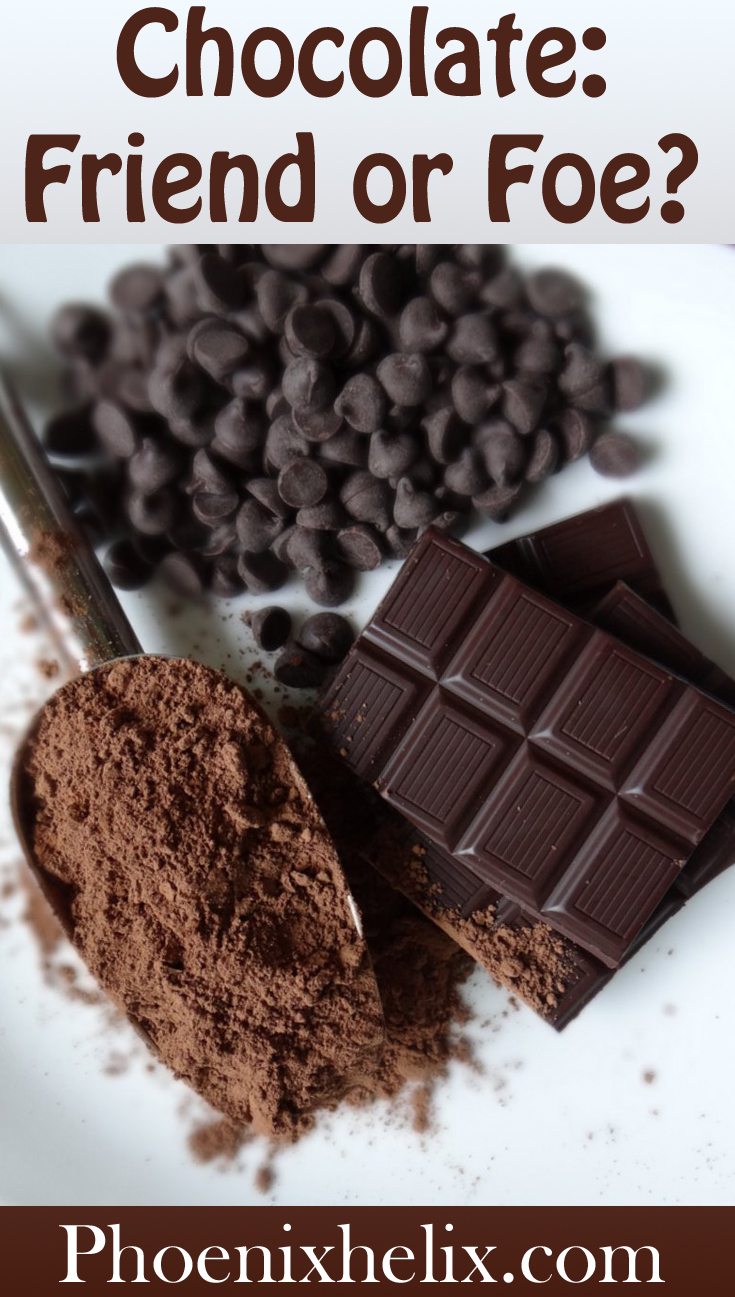
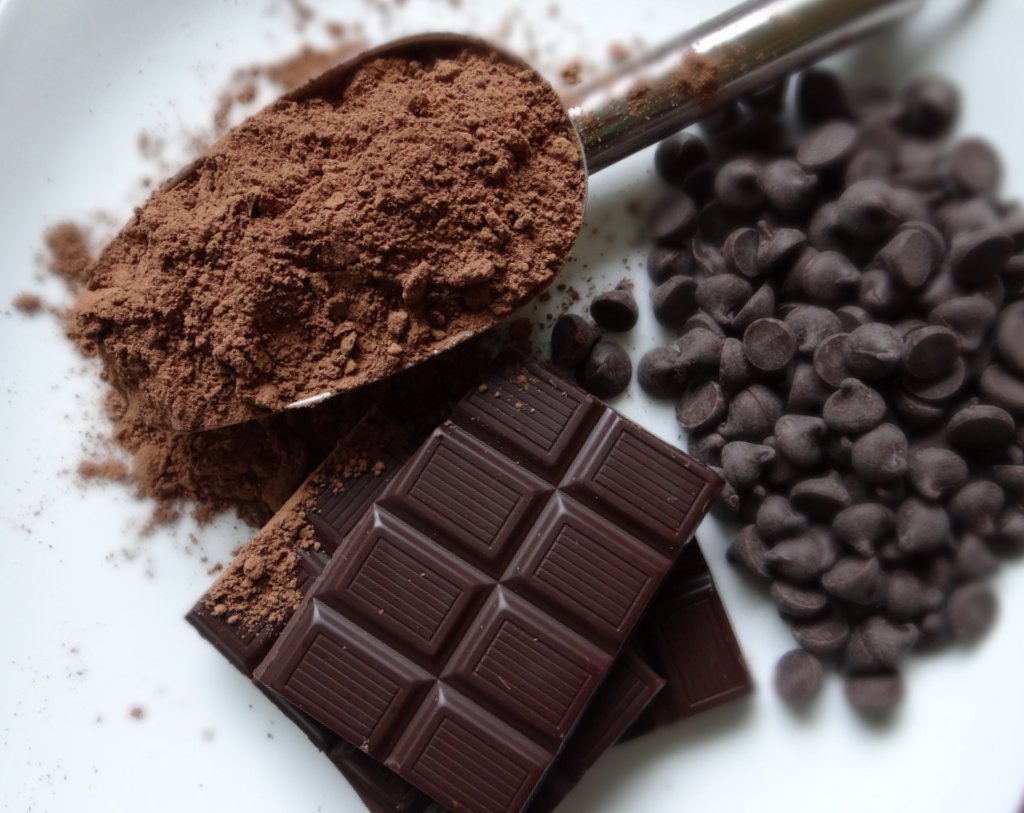
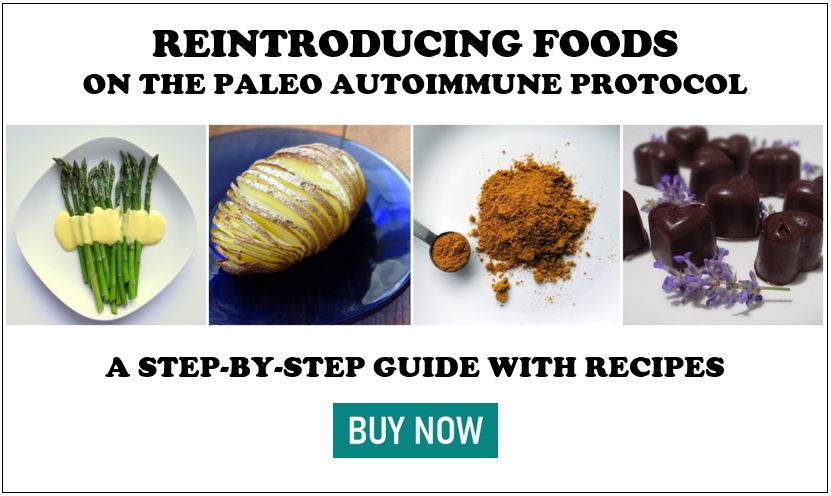

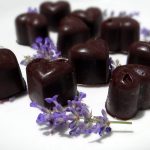
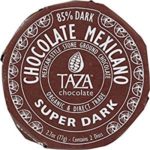
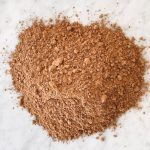
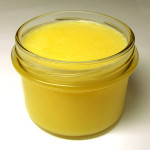



Is cacao butter allowed on the AIP?
Not during the elimination phase. It’s considered a Stage 1 reintroduction.
Fantastic comprehensive overview from many different points, thank you!
You’re welcome!
Which brand of cacao powder do you purchase?
Hi Katherine. I use the one that I recommend in the post: Rapunzel.
Hi, What do you think about Nativas Naturals (Raw) Cacao Powder?
I don’t think it’s an exception to the rule, Tim. I don’t buy anything advertised as raw cacao personally, for the reasons stated in the article.
I stopped eating Raw Cacao. I’m allergic to mold and having the Mold Gene (I don’t produce enough mold antibodies or detox mold or mycotoxins efficiently). I read that most Raw Cacao is HIGH in mold mycotoxins. Google and read more on that.
Your posts are always so useful! I am experimenting with cocoa/cacao at the moment to see if they make my eczema flare…was feeling a little guilty about buying non raw chocolate as they could have less “goodness” but interesting to read that you recommend them over the raw cacao! Do you think a small amount of raw chocolate or cacoa (say powder in a smoothie) is ok every now and again once things are back on track or best to avoid completely?
Also would like to inform any UK readers of the Hotel Chocolat Single Origin chocolate bars – http://www.hotelchocolat.com/uk/shop/collections/products/rabot-1745 Most are dairy free, with only cocoa and sugar, the 100% bars are sugar free. The growing process seems pretty above board, though I intend to do more research on their ethical policy – http://www.hotelchocolat.com/uk/rabot-estate/our-story/engaged-ethics
Some bars are certified organic, some not, but the brand does stress that all chocolate grown on the estate uses organic farming principles http://www.hotelchocolat.com/uk/help/faq/hotel-chocolat
Along with Green and Blacks 75 or 85% dark chocolate I would say this is definitely a brand worth checking out if you are after interesting tasting high quality chocolate! Lindt 90% is also completely delicious, but sadly not organic at all, though they do seem to be making some efforts at sustainability – http://www.lindt.co.uk/world-of-lindt/sustainability/responsible-procurement/.’ Divine’ 70% dark chocolate is fairtrade, but not organic and not to my taste. Hope this is useful information!
Very useful – thanks Zoe! If you tolerate cocoa/cacao (which really are the same thing), I think it’s fine in moderation. Best wishes on your reintroduction!
Glad to be of help! I am thinking of starting a blog myself at some point in the near future, so may explore this topic further there! I will of course link to your post for people wanting more information on the autoimmune /mechanistic side of things. One more thing to note about Hotel Chocolat is that some of their non organic beans are sourced from other plantations – presumably these are ethical but may still have had pesticides used on them. I will be emailing to find out soon! Thank you for the good luck wishes also 🙂
*non organic single origin bars that should read
Eileen, I fell in love with you after reading this article! It’s so hard to find nutrition bloggers or even experts who aren’t lazy enough to check the science of claims. Even Weston Price foundation isn’t as thorough or up to date on this issue as you are here. I’m studying evidence-based holistic nutrition and planning to start a blog as well, mainly for the benefit of my clients and not as a commitment on its own. Thanks for doing all this excellent work!
Thanks Tatiana. Here’s to evidence-based nutrition! I look forward to reading your blog.
Good to know ~ pure ingredients & fair trade 🙂 I find them at Whole Foods Market and Sprouts Markets in Arizona.
Thank you for this great article. I stopped eating chocolate last year due to Autoimmune, Mold Biotoxin Illness & other underlying issues. I had to cheat this month. some chocolate is okay, especially vegan white and fat free only sweetened with honey & mint. Yum. But, one brand i used to eat 4 yrs ago really flipped a moody switch & noise sensitivity on me this week bad!!! i also suffer from Mold Biotoxin Illness & to see that many RAW chocolates are high in fungi, i bet that is IT or part of it. The “Righteously Raw” brand chocolate bars are really Delicious & made with care, however they make me feel awful. They also sweeten with Agave& dates (dates another high mold & histamine food). So, if I cheat I’ll stick with organic vegan white chocolate or roasted only. I feel best avoiding, but the brand i feel comfortable grabbing on occasion is Heavenly Organic Chocolates, which have NO fat/oil added;honey sweetened . the Raw Chocolate may have triggered my Autoimmune too.
What brand of white chocolate do you consume?
I’ve found these two delicious: 1) organic Green & Black White Chocolate 2) vegan Gold White Chocolate by Organic Nectars. I am not supposed to have dairy (in G&B) any more & have to limit cashews (in ON bar), so both are cheats now. It’s hard to find a vegan white chocolate w/out nuts. Highly recommend trying these.
Thank you for this article! I have been following the AIP strictly for 60 days and chocolate (I used to eat the AlterEco 85%) is the thing I miss the most. I may bring it back as an occasional indulgence even though I’m planning to stick to the diet for another month before doing reintroductions.
Treat it like a reintroduction Viola, and follow the steps. That’s the best way to know if you tolerate it well. Good luck! I do love chocolate.
Hello!
In doing much research about Dutch-processed cocoa, I still cannot find the answer to a question that I have:
The fact that many of the antioxidants in the cocoa are neutralized by the dutching process—-is this the only downside to Dutch-processed cocoa? Or is this truly an unhealthy, unnatural process involving nasty chemicals as with factory-processed foods?
I struggle to understand what exactly happens when the cocoa is Dutch-processed.
Either way, I still always use natural cocoa powder. I’m just trying to figure out what the “dutching” is, to make an informed decision on whether I’d feel comfortable eating Dutch-processed on occasion.
Thank you for any information you may have!
Sorry, Bethany. I’m not an expert on dutch processing. I prefer foods that haven’t been processed, so like you, I do avoid it. However, if you find more details, please come back and let me know.
Ok. Thanks, Eileen!
Thanks Eileen! I think I will try the carob anyway – I’m intrigued:-)
Thank so much for this article! I have ulcerative colitis and started the Autoimmune Protocol diet two weeks ago. I stuck to it very strictly but by yesterday was feeling very down and deprived because of the lack of chocolate. I decided to introduce small amounts of 85% chocolate, just to stop me from falling off the AIP altogether.
Here in the UK, it’s tricky to get any of the chocolates you mention, but we do have Green and Blacks, which has only four ingredients – cocoa mass, fat reduced cocoa powder, vanilla and raw cane sugar. All of the ingredients are organic and the cocoa is fair trade. Just thought I’d mention this in case any of your readers/subscribers are from the UK.
Hi Eleanor. Thanks for the tip on a good brand of chocolate in the UK, and I totally understand doing what you need to do to make the AIP sustainable for you. If you decide you want to try strict AIP and exclude the chocolate, carob is allowed on the AIP and here are two great AIP recipes: Carob Truffles and “Chocolate” Raspberry Pudding. Whatever you decide, I wish you full healing, and lots of delicious food along the way.
Hi Eileen! This is wonderful article. I was wondering if you don’t know cocoa butter might be AIP friendly, since it’s pure fat? I can’t find much info abou it. Thank you for your answer. Renata
Hi Renata. It’s not AIP-friendly, but I would consider it a Stage One Reintroduction – one of the first foods you can try reintroducing after the elimination period.
Thanks for this interesting and descriptive article! First, sorry for my bad English, but perhaps could be good information for people interested in oxalate-kindey stones. It seems it’s not oxalate that prevents stones formation, but isolated teobromine (apparently, non containing oxalate) what is capable in preventing the formation of stones. Article in Spanish (see http://www.diariodemallorca.es/mallorca/2014/11/14/evitar-calculos-rinon-gracias-chocolate/976468.html#.WvF3dq78I1vepR0 )
I love this article! It makes me feel better about my chocolate-eating habits, haha 🙂
1) You mentioned phytic acid in chocolate can reduce absorbability of certain nutrients. Is this an all day thing? Or only if you eat chocolate within a certain amount of time from a meal?
2) Is the Enjoy Life brand safe?
Hi Hanna. The idea behind phytic acid is that you don’t want it to be a huge part of your diet. As long as you treat chocolate as an indulgence and don’t binge, you should be fine. As for the Enjoy Life brand of chocolate, it’s the real thing, and it’s allergy-friendly, but it’s not fair trade.
Hello ! Thank you for these infos ! What about cacao butter (to make our own chocolate)…What should we choose ? Is raw ok ?
Since cocoa butter is extracted as a final step in the cocoa making process, I think it’s usually false advertising when they call it “raw”. That might just be their way of letting you know it’s not refined.
Thank you…you are very kind. 🙂
Thanks for being so kind to take the time to respond…..very well said. 🙂 God bless (I have some heart issues so want the benefits….so basic store bought would not give the benefits)
I was reading on oxalates. As guy always had ‘fear’ of developing kidney stones. I read post uptop by guy that you answered. I also read that chocolate and almonds are high in oxalates. Obviously moderation. So would you say one once of 85% percent dark chocolate daily is not an oxalate problem that would lead to kidney stones? What about with handful of almonds too? But mainly asking your knowledge on chocolate. Thanks so much 🙂
Here’s an interesting fact. In Sarah Ballantyne’s book, The Paleo Approach, she reviewed over 200 scientific studies relating to food consumption and health. She said the research actually shows the opposite of what people have believed. Oxalate consumption can actually prevent kidney stones. I’m not saying this is a prescription to start bingeing on chocolate, but I think you can enjoy it in moderation without fear.
It really depends on your health. This website is dedicated to people with autoimmune disease, and we have to be a lot more careful. For example, I can’t eat tomatoes or french fries, because they’re nightshades which cause my rheumatoid arthritis to flare. My husband, on the other hand, can eat either one with no worries. So absolutely you can choose for yourself where you draw the line on health. I wouldn’t eat the chocolate bar you describe, but my husband would. As for cocoa benefits, if you read the article you’ll see that cocoa is really more of an indulgence than a health food. All of the studies that show its benefits use specially formulated cocoa that has a higher flavanol content than any storebought bar. That doesn’t mean you shouldn’t eat chocolate if you enjoy it. I just means it’s a treat, not a nutrition supplement.
I eat lots of tomatoes a week. It’s good for you. But I’m not going to stop having some French fries on occasions. Though some would say you should never eat. But I’m just not going to go that extreme. I’m going to eat good stuff and ‘some’ bad. So, if a dark chocolate has 74% cocoa solids (cocoa mass, sugar, cocoa butter, sunflower lecithin(emulsifier), natural vanilla flavoring) in it. Is it really that bad to have little emulsifier in it? Isn’t the cocoa benefit better than not having it at all? Even though some junk is in it. And the reason is the price is so much higher with other bars.
Thanks so much for taking time to respond :).
Hi 🙂 ….my health friend says cocoa liquor is really just trash. I’m confused by all I read. I see on bar that I got says cocoa mass as first ingredient. A 74% cocoa. It also says on bar (cocoa solids : 74% minumum) Is this good? Is cocoa mass (cocoa liquor) trash? Thanks
I’m afraid in this one instance, your friend is misinformed. This article is heavily researched, and you can trust the information it contains. If you haven’t read it in full, I recommend taking the time to do so, because you seem very interested in the topic. In the article, I give the true definition of chocolate liquor, which is simply cacao nibs ground into paste. As for what to look for in a chocolate bar, 74% sounds good, but equally important is what else is on the list. You don’t want to see soy anywhere, or too many other ingredients. The section called “Maximimizing Cocoa Benefits At Home” has shopping recommendations. Lastly, look for the fair trade logo, to avoid buying chocolate that comes from child and slave labor.
Its because the data sheet that we have only has the word ‘cocoa’ and not ‘cacao’. And then I wanted to know your thoughts on carob – particularly toasted since we don’t have data on toasted carob.
Hi Eileen,
Where did you get your oxalate data from?
From the data I am reading carob aswell as cocoa are very high in oxalates – I’m part of the yahoo oxalate group.
Alice
Here’s the list I found that showed chocolate as high and carob as low. If you’re a member of the oxalate group, though, why are you asking me? No offense intended. It just seems like you already had the answer to your question.
Does both cacao and cocoa have high oxalate levels?
And what about toasted carob powder?
Thanks
Hi Alice. Cacao and cocoa are the same thing, so they have the same oxalate level. However, serving size really determines whether it’s a high oxalate % of your daily diet. If you stick to 1-2 ounces a day, it’s not much. If you binge on chocolate, you’ll get a lot of oxalate. As for carob, it’s a completely different plant and is low oxalate.
Great article!
I cannot find where you list any brands that you know to fit all these criteria, but here is one I know and love:
https://www.theochocolate.com/about-theo
Theo Chocolate in Seattle, WA is the FIRST Organic and Fair-Trade certified Chocolate Factory in North America and they taste AMAZING!
I visit the factory directly once a year, my mother-in-law mails me some each holiday, my local Kroger sells them, and I can order straight from their website. Can’t get any better than that!
Hi Birdi. There’s a paragraph in the article called “Choosing the Right Chocolate Bar” and Theo is the very first brand I list, so I totally agree with you!
Such good info! I had never taken the time to learn the difference between “dutch processed” and other cocoa, and definitely hadn’t considered the roasting process! However, limiting myself to chocolate products with a Fair Trade certification has done wonders for my over-indulgence!
And would you believe that as a child the smell of BACON and COCONUT made me nauseated? Favorite foods now!!
Thanks for linking up to Wellness Wednesday!
Anjanette, that’s wild! Thank goodness, our taste buds change!
Great article with some valuable research. Thanks for posting this at the 100th Wildcrafting Wednesday.
I found your article very interesting. I don’t eat a lot of chocolate, but when I do I always choose Fairtrade and/or organic.
Oh man, that horrible to hear most chocolate we eat is made through slave labor. 🙁 That alone is gonna make me rethink purchasing chocolate…
I learned about the slave labor a few years ago, and it rocked my world. It’s frustrating, because the big chocolate companies do a lot of PR about how they intend to eventually have slave-free chocolate, but they act like it’s out of their control, and they just keep moving the deadline.
For me the fact that companies knowingly use child slave labor is so much worse than putting all the nasty additives into chocolate. Thanks for sharing this wonderfully informative article, Eileen, and raising awareness!
I love chocolate, only buy from our researched chocolatiers who are very keen to support honest cocoa farmers. We even have one who makes 100% bars, and because the are better beans they do not taste bitter, and have flavours of banana, melon etc naturally in the final pure result.
Oooh, that sounds lovely Sue.
There have been several scientific studies that conclude that dark chocolate is good for you (in small daily amounts). These findings have been evaluated and confirmed by other studies and scientists (whose name escapes me at the moment). But it’s quite clear that, in moderation, dark chocolate is good for you.
Thank you for the fantastic read! And I’m so pleased you reached a positive conclusion! I used to be a milk chocolate addict but now – I LOVE organic dark chocolate! Though I do ration it 🙂
Thanks for reply. Yep, I always check for soy and avoid it! I can barely keep my mouth shut when I hear someone order a soy milk latte! I bet 90% of the time it is because they think they’re being healthier.
I know! Sometimes I think I live in a parallel universe, my view of food is now so very different from mainstream. I’m just glad I found the wormhole to truly healthier eating. 😉
I’ve been allowing a bit of chocolate on my pretty strict elimination diet for Lupus. I look for the good quality choc. bars (most big markets sell them) that are 75% cocoa or greater… then flip over to the nutrition label and make sure it is 7 grams or less sugar. To me – that seems like the healthiest choice. (And make sure what they consider a serving size is comporable to other bars — probably 1/3 of the bar itself).Usually these bars are around $3.50 (Safeway has them for $3.00 but a touch higher in sugar than I’d like )
(To clarify – 7g of sugar or less PER serving) I tried 100% cocoa (basically baking chocolate) and found there is NO pleasure in eating that!! Good chocolate (not fake candy) has Thorobromine which contains some healthy attributes BUT it is also the part of cocoa and chocolate that is toxic or lethal to dogs! So be careful.
I agree that chocolate definitely needs a little sweetener, and it sounds like you’re choosing high quality dark chocolate. Just make sure there’s no soy! My favorite is now the homemade chocolates. I posted a new recipe today that shows you how to add flavors like orange, ginger, mint, etc. My kitchen is a happy place! I think it’s important that those of us with autoimmunity get to have treats occasionally. Life isn’t meant to be 100% spartan, and dark chocolate is one of my favorite treats.
I find I actually prefer plain ole unsweetened bakers chocolate. I love the intense chocolate taste.
Now, that’s a chocolate lover!
I think anything that tastes horrid without sweetener is probably not meant for food. I know back in hunter days they were not sweetening the cocoa… and prob did not eat it because its very very bitter on its own. I for one do have issues with chocolate it gives me anxiety attacks, but I am jealous of people who can eat it with honey and feel great.. not me, not yet:( The super high oxalate content is also very bad for a lot of people with gut issues, it can cause chronic pain.
Hi Melissa. Thanks for sharing your story. I’m sorry you’re one of the few who do react negatively to cocoa, but yes, I would stay away from it too, if it gave me anxiety attacks. Thankfully there are other delicious foods out there! To respond to your concern about oxalates, cocoa is on the high list because they measure oxalate content in 100 grams of each food. But 100 grams equals a full cup of dry cocoa powder, when a serving is just a tablespoon. As long as it’s eaten in moderation, oxalate shouldn’t be a worry. As for the hunter-gatherers, we don’t have records that far back, but the Kuna Indians are an indigenous tribe in Central America that have been studied for their excellent health related to their cocoa consumption (since they live in the area it grows). It turns out they traditionally sweeten theirs with bananas. Humans have always been pretty ingenious in finding food and making it palatable.
Thank you for this great article! Some chocolate chips/bars have been disagreeing with me lately, even though they say organic, gluten free, fair trade and have no cow’s milk ingredients. I’m wondering if it is the soy lecithin, sugar or toxins that are bothering me. I recently found a high quality cocoa powder that does not cause me any problems (from the Bulletproof Executive website). I started to worry about using any type of cocoa powder after reading about gluten cross reactivity on another site, so your article has helped me to understand the reasoning behind this. Hopefully I can keep a little dairy free, gluten free, toxin free dark chocolate in my life. 🙂
Exactly! Just because we’re on healing diets doesn’t mean every indulgence should be denied us. This was a fun article to write; I learned a lot.